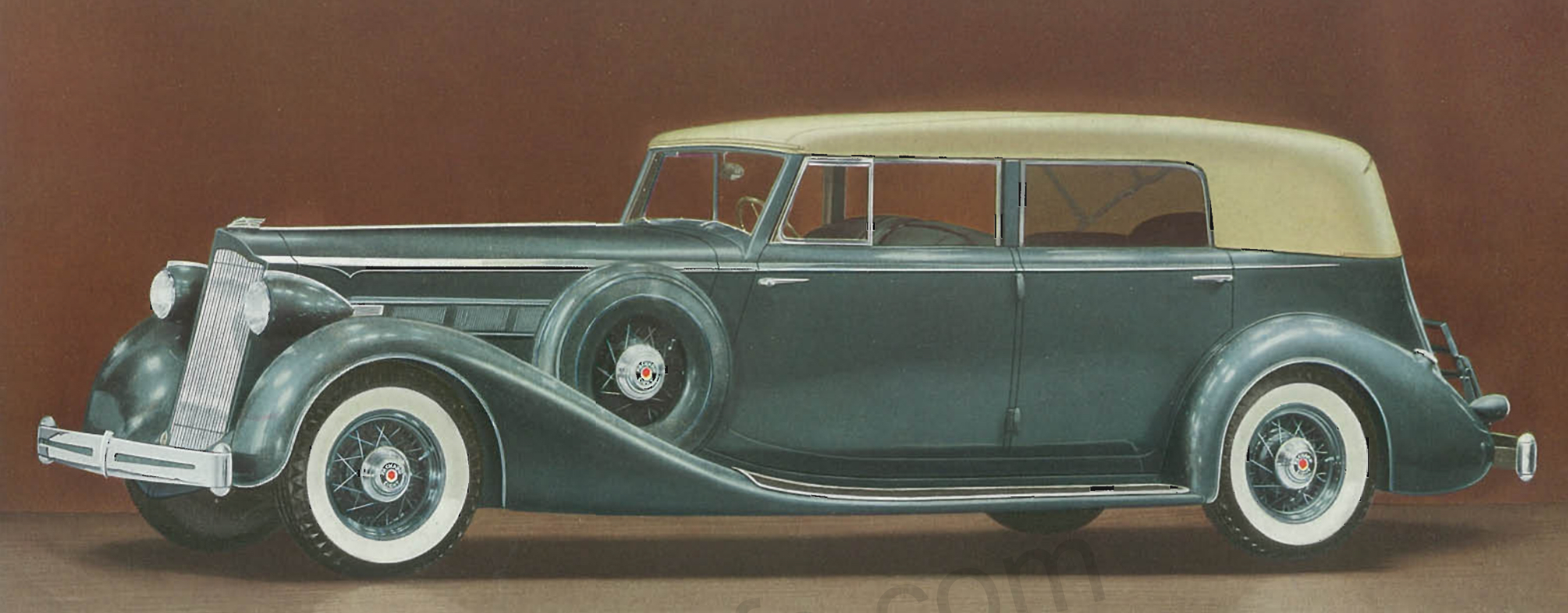|
Re: Mojave Tan - A 1956 400 Saga
|
||||
|---|---|---|---|---|
|
Home away from home

|
Had some time tonight, so I removed both solenoids, gently sandblasted the posts, cleaned all the connections, and put everything back in the correct orientation. Connected the battery and flipped the switch to "on". Nothing happened. So double checked that power was where it should be (green wire, bus bar, upper posts on the solenoids, etc). All good.
So car went back up in the air (switch off) and pulled the controller cover off. Removed the yellow and blue wire going to the limit switch and tested continuity. All good. Pulled the pink and orange next....no continuity. So I suspected a broken wire at the limit switch. The switch had obviously been worked on in the past with rubberized coating over everything. After some work to get it all off and expose the ends of the wire I found this:  Broken pink wire that had been repaired previously. So cleaned up the wires on both ends of the break, flux, tinned with solder and reconnected them back together. Should be better this time around.  Taped it all up nice and cleanly, put all the wires back in the controller box and closed it up. Car back on the ground, rear sitting very low. Turned the switch on and within about 5 seconds the relay kicked and the rear end moved up nice and level. Awesome! Stood on the bumper and the motor kicked in (rather quickly) and raised it up to level again. Stepped off the bumper and waited for it go down. And waited. Hmm, nothing happening. Went ahead and grounded the top post of the "down" solenoid for a second, which triggered the solenoid and started moving it down. Without it grounded anymore it continued to go down until it reached level and shut itself off. I repeated this same test with the same results. So now the only problem I'm having is getting the "down" solenoid to kick on like it should. Once it's kicked then everything works normal. Only takes a quick tap to ground to do it. Not sure if it's just not getting enough of a signal from the control box or what. Thoughts?
Posted on: 2/6 0:48
|
|||
|
Kevin
1954 Clipper Super Panama "Van Halen" | Registry | Project Blog 1938 Super 8 1605 | Registry | Project Blog 1953 Clipper Deluxe Club Sedan "Rusty McRustface" | Registry | Project Blog 1956 Packard The Four Hundred "Tanner" | Registry | Project Blog |
||||
|
||||
|
Re: Mojave Tan - A 1956 400 Saga
|
||||
|---|---|---|---|---|
|
Home away from home
|
Quote:
Kevin, re. above, remember that the current to keep a relay engaged is often less than what is needed to engage it. So per what 56 just said, I would check the resistance or voltage drop at the blue wire. You may just need to clean the contact a bit more.
Posted on: 2/6 7:49
|
|||
|
1955 400 | Registry | Project Blog
1955 Clipper Deluxe | Registry | Project Blog 1955 Clipper Super Panama | Registry Email (Parts/service inquiries only, please. Post all questions on the forum.) service@ultramatic.info |
||||
|
||||
|
Re: Mojave Tan - A 1956 400 Saga
|
||||
|---|---|---|---|---|
|
Forum Ambassador
|
I suspect you are going to find that despite the former cleaning the bimetal contacts again have a layer of oxidation build up which is preventing a solid enough contact for current to flow thru. Once the oxidation is established it can take much longer for the heater to keep bending the bimetal and finally get enough force to press the contacts together hard enough along with providing the bit of a sliding action needed to sort of wipe them to finally get the solid contact to bring in the relay. Sometimes oxidation can get so established it won't clean up and the switch will refuse to work. With the heater staying on longer and longer it can finally burn out. As mentioned before, others have found this oxidation can occur in the control switch even with it just sitting on the shelf for years. Even when in operation, contacts without continual use to keep the oxidation under control tends to build up again.
You could try cleaning the contacts again but with no guarantees because the oxidation has established itself. For reliable operation you might even need to resort to getting rid of the bimetal section and go with one of the conversions to the solid state time delay relays. I don't know which of the vendors still sells the conversions but they are out there. If you wanted to go that conversion route, while it is not the simplest of projects you can always make your own. It should be less expensive than the ready made box but downside to making your own aside from the work is the easily found and relatively inexpensive time delay relays that fit inside seem to all have a fixed time of 10 seconds instead of the 5-7 second delay Packard advertised with the stock switch. You could substitute a component in the relay to change the time and get it back to stock but unless you know how the timing circuit in a particular relay is done, tearing into one when trying to modify the time can result in a ruined relay.
Posted on: 2/6 10:32
|
|||
|
Howard
|
||||
|
||||
|
Re: Mojave Tan - A 1956 400 Saga
|
||||
|---|---|---|---|---|
|
Home away from home

|
I let it sit for at least a minute before resorting to bumping the solenoid with a ground. I'll check the connections again before pulling and opening the box. It could be the blue wire connection at the solenoid. I tried to clean the wire connection the best I could, but it's an awkward angle and the wire doesn't have much give to it. That would be the only thing outside of the box that it could be.
If that doesn't work then I'll open the box again and check the contacts. I didn't clean them myself as they already looked clean. But it wouldn't hurt to go back and do it all again.
Posted on: 2/6 10:55
|
|||
|
Kevin
1954 Clipper Super Panama "Van Halen" | Registry | Project Blog 1938 Super 8 1605 | Registry | Project Blog 1953 Clipper Deluxe Club Sedan "Rusty McRustface" | Registry | Project Blog 1956 Packard The Four Hundred "Tanner" | Registry | Project Blog |
||||
|
||||
|
Re: Mojave Tan - A 1956 400 Saga
|
||||
|---|---|---|---|---|
|
Home away from home

|
So assuming I want to change the time to activate the TL system, do I just bend the contacts that the bimetal strip touches?
When I stepped on the bumper last night it kicked on almost immediately. But thinking back on it, I think the bimetal strip was still very close to the contact because the car had just barely leveled itself from sitting low. So I don't think that's an actual issue. But if it's taking too long to kick the solenoid to bring the car back down I'd like to know how to properly adjust it without screwing it up.
Posted on: 2/6 18:13
|
|||
|
Kevin
1954 Clipper Super Panama "Van Halen" | Registry | Project Blog 1938 Super 8 1605 | Registry | Project Blog 1953 Clipper Deluxe Club Sedan "Rusty McRustface" | Registry | Project Blog 1956 Packard The Four Hundred "Tanner" | Registry | Project Blog |
||||
|
||||
|
Re: Mojave Tan - A 1956 400 Saga
|
||||
|---|---|---|---|---|
|
Forum Ambassador
|
Bending the fixed vertical contacts attached to the phenolic plate (labeled side 2 contacts in the middle photo in post 36) away from the center resting point of the bimetal a SLIGHT amount will lengthen the time but do it in very small increments. Too much bend and you can reach a point the bimetal just can not be bent anymore by the heater or once it bends and touches the contact, does not have the force to make a solid electrical connection. I don't remember which side contact controls which direction though.
Posted on: 2/6 18:26
|
|||
|
Howard
|
||||
|
||||
|
Re: Mojave Tan - A 1956 400 Saga
|
||||
|---|---|---|---|---|
|
Home away from home

|
Quote:
If looking at the picture you have of the internals, the right contact to the bimetal strip goes to the "up" position (orange). The left contact goes to the "down" position (orange). At it does on the '56. I would assume the same for '55.
Posted on: 2/6 19:58
|
|||
|
Kevin
1954 Clipper Super Panama "Van Halen" | Registry | Project Blog 1938 Super 8 1605 | Registry | Project Blog 1953 Clipper Deluxe Club Sedan "Rusty McRustface" | Registry | Project Blog 1956 Packard The Four Hundred "Tanner" | Registry | Project Blog |
||||
|
||||
|
Re: Mojave Tan - A 1956 400 Saga
|
||||
|---|---|---|---|---|
|
Home away from home
|
"That would be the only thing outside of the box that it could be." Don't discount the limit switch connections. Based on the picture of the switch you soldered, you may have corrosion and broken wire strands at the connections which could limit the current. Also make sure the connections for the Blue and Yellow wires are tight in the control box as you had one Blue wire disconnected and said one of the other wires was loose.
If you are going to try adjusting the delay by bending the contacts, first heat the bimetallic strip for your target delay time (the factory always quotes 7 seconds) to locate the position for the contact so as to minimize the number of bends.
Posted on: 2/6 21:36
|
|||
|
||||
|
Re: Mojave Tan - A 1956 400 Saga
|
||||
|---|---|---|---|---|
|
Home away from home

|
If you want to change the compensator switch to timing relays. I have a pair
Or. I can ask gerry if he had any questionable switch's. And I can make one up. Cost is only what gerry wants and shipping. Unless you have a spare that you can swap with the one on car. Ans see if you still have the problem. If the same problem. Then it's between solenoids and switch.
Posted on: 2/7 0:42
|
|||
|
Riki
|
||||
|
||||








